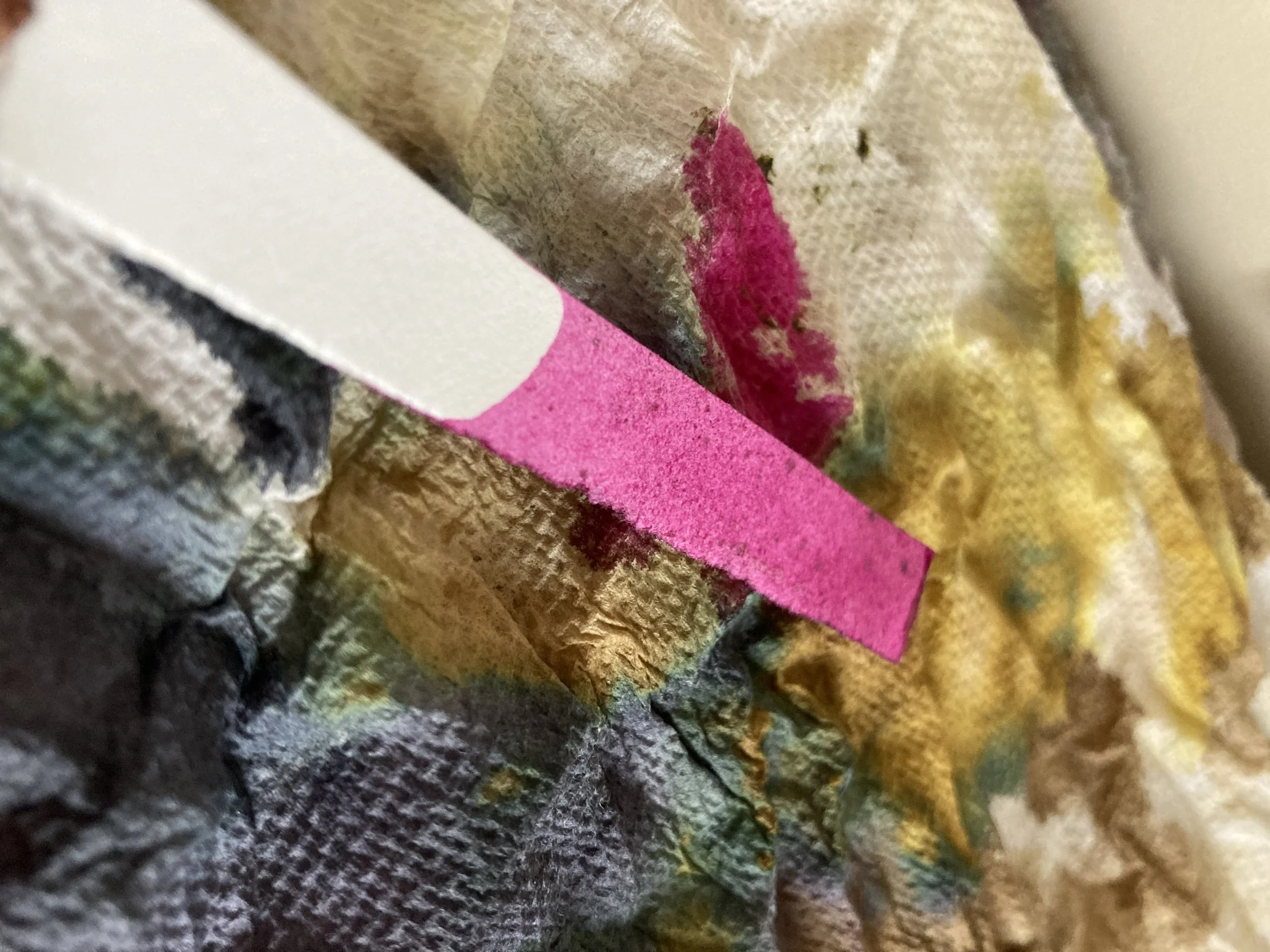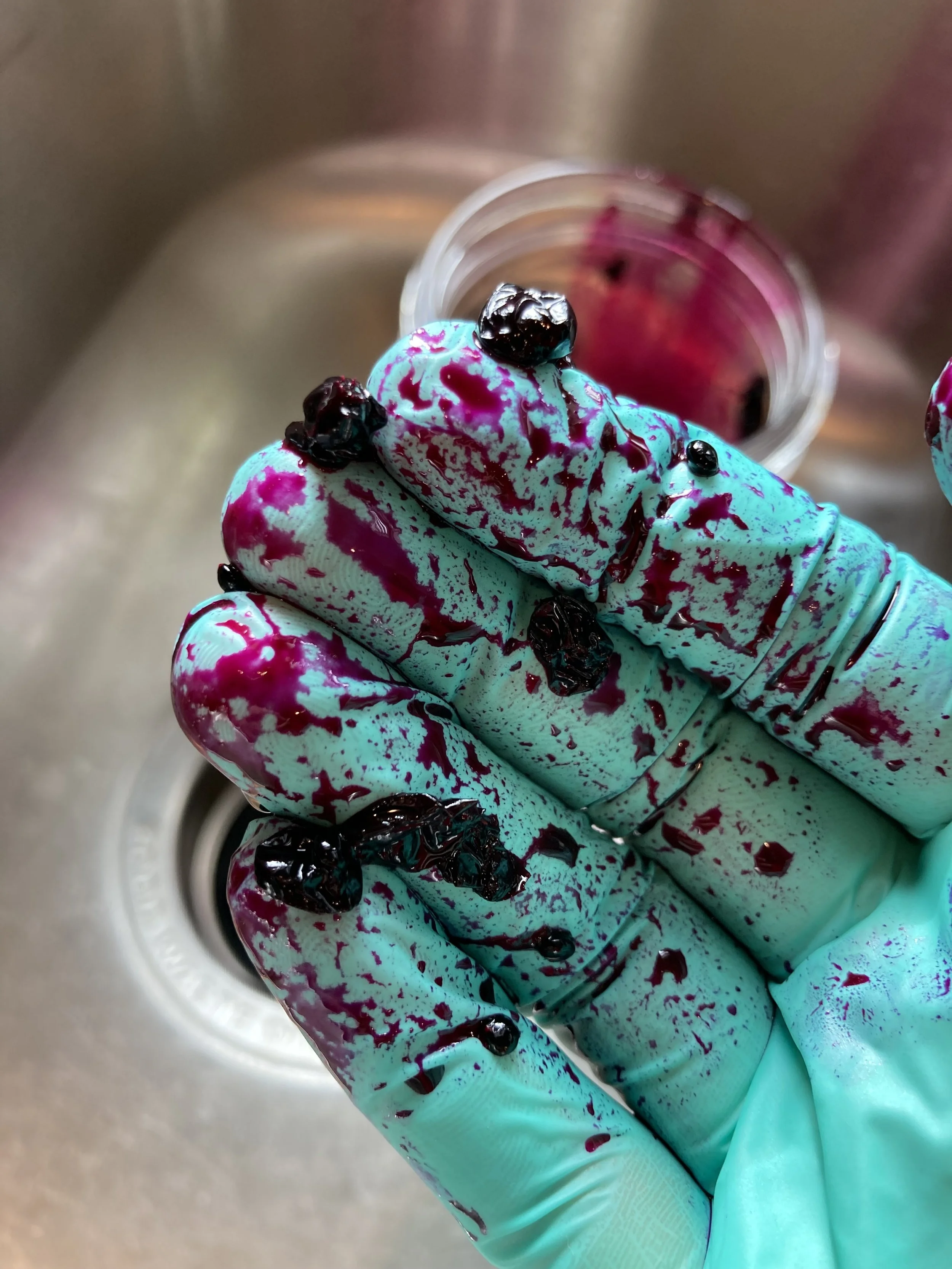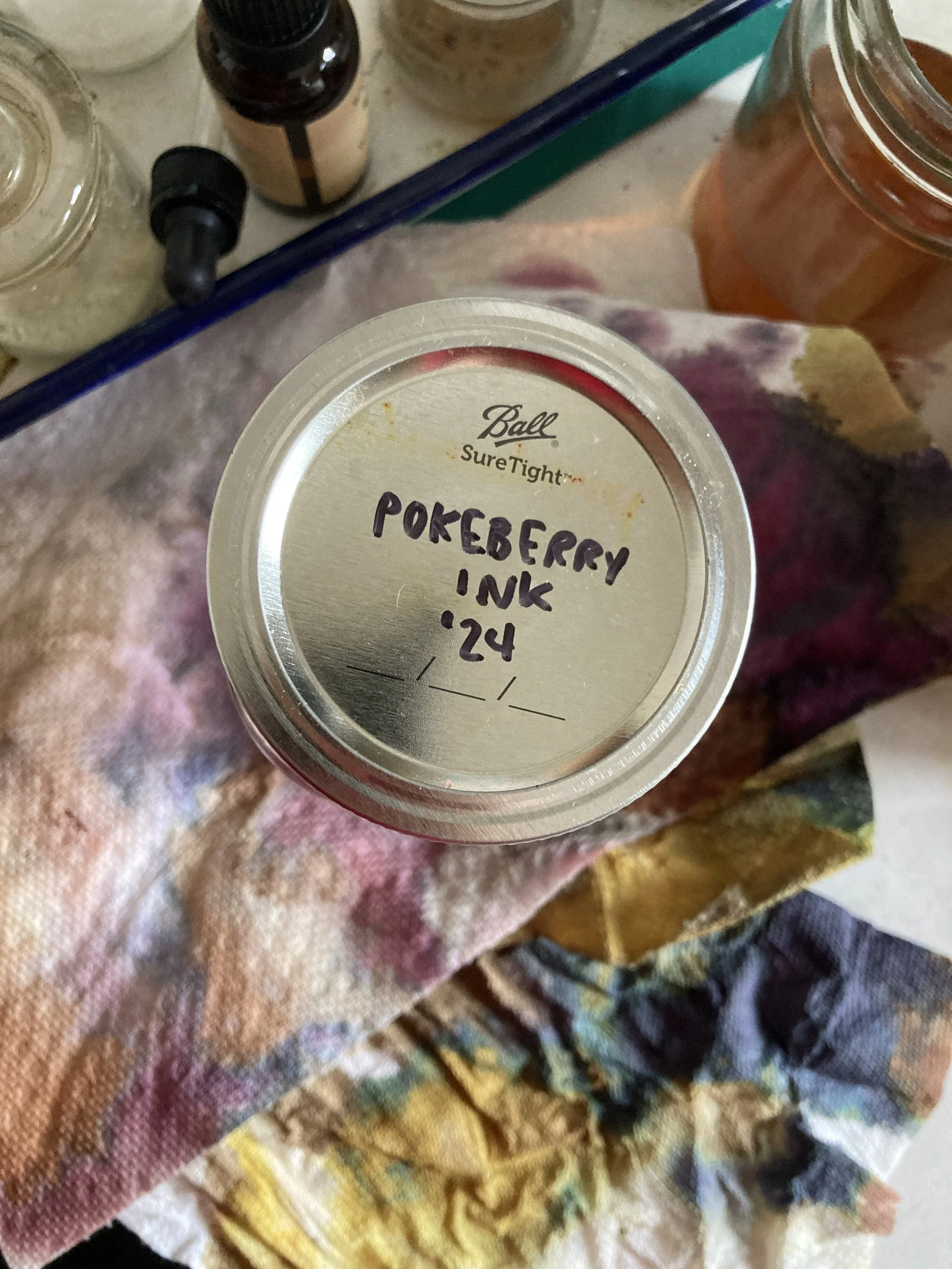POKEBERRY INK
FINDING POKEBERRY
These large, pink-stemmed pokeweed shrubs grow about five to six feet tall. I’ve seen them on roadsides in Michigan, in fields, in woodlands, and I happen to have two large shrubs in my backyard. The iconic pink berry clusters are first green, then white, then almost-black magenta. Each pokeberry eaten by a hungry bird contains ten seeds—and those seeds can remain unscathed as they pass through the bird’s digestive system. The seed coat is so hard that it can remain viable for almost 40 years. I try and think about that each time I pick a cluster to make into ink.
MATERIALS
Inkmakers beware: Every part of the pokeweed plant—from roots to leaves to berries—are poisonous to us if we ingest them. Please be careful as you harvest, make in, and as you properly dispose of the plant parts afterwards. Clearly label your ink and keep the materials out of reach of pets and children.
You’ll need:
Glass container with tight fitting lid
Stainless steel pot (used only for ink/dye making)
Funnel (used only for ink/dye making)
Bowl (used only for ink/dye making)
Cheese cloth
Around 1-2 cups of pokeberries (but can be made in smaller batches)
½ teaspoon salt and ½ teaspoon vinegar
Wintergreen essential oil (3-6 drops) or whole cloves
Spoon (that you will only use to make ink) or stick for stirring
Rubber gloves
MAKING THE INK
In your pot for just inkmaking, add your pokeberries. Wearing your rubber gloves, use your hands to mash the berries in the pot.
Once berries have been mashed and color has been released, filter everything through your cheese cloth and into a bowl.
Gather up solids and dispose of honorably. I replant in my backyard away from family and pets.
Using a coffee filter, you can strain the magenta liquid again for a smoother, less textured ink.
Add your wintergreen oil or whole cloves (one clove per bottle of ink should be enough).
Optionally, I add ½ teaspoon salt and ½ teaspoon vinegar, and stir. The vinegar to help the ink retain its color, and the salt to keep it from molding too quickly.
Pour your ink into a glass container with a tight-fitting lid. LABEL your jar! I will often even put a little “skull and crossbones” on the side of the jar for emphasis. This ink is no joke.
I don’t store this one in my fridge because of safety reasons. Keep in a dark, cool place instead.
EXPERIMENTING
The ink will fade over time, going from bright magenta to brown. Jason Logan from the Toronto Ink Company suggests using casein as a natural fixative option for the ink, but I choose to let the ink behave as it will.
You can actually read a short nonfiction essay I wrote about historical pokeweed fading patterns here. It also happens to tell the story of how I fell into love with natural inks.
Adding alkali additives to pokeberries makes for an alien green color. Experiment with sprinkling baking soda onto the wet ink and see it spread in fascinating patterns.






